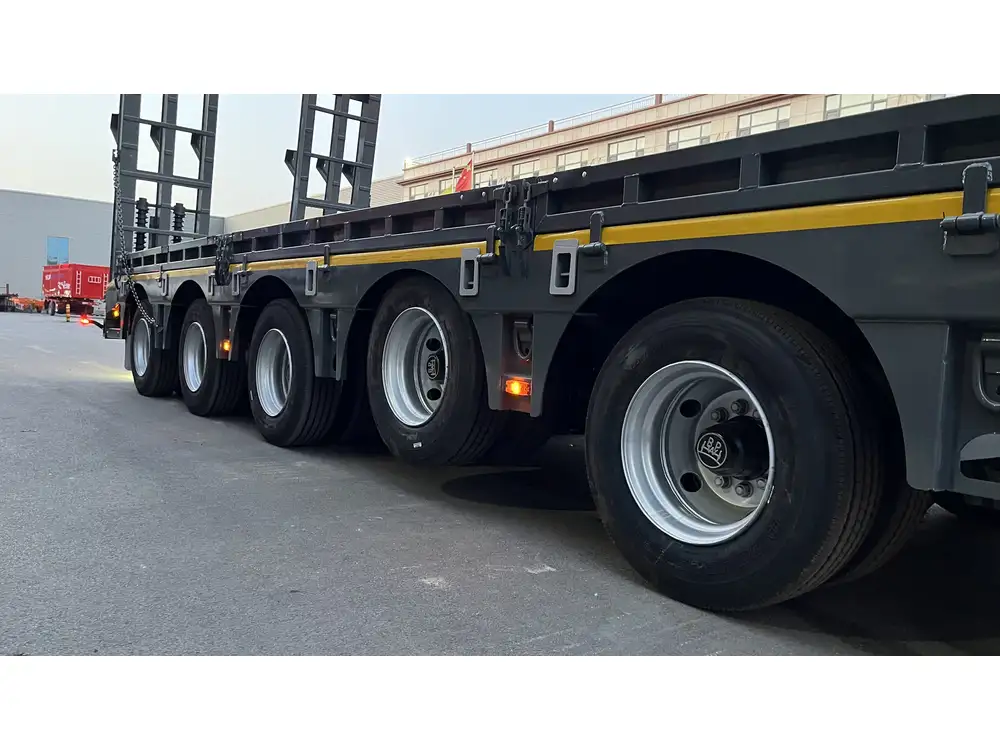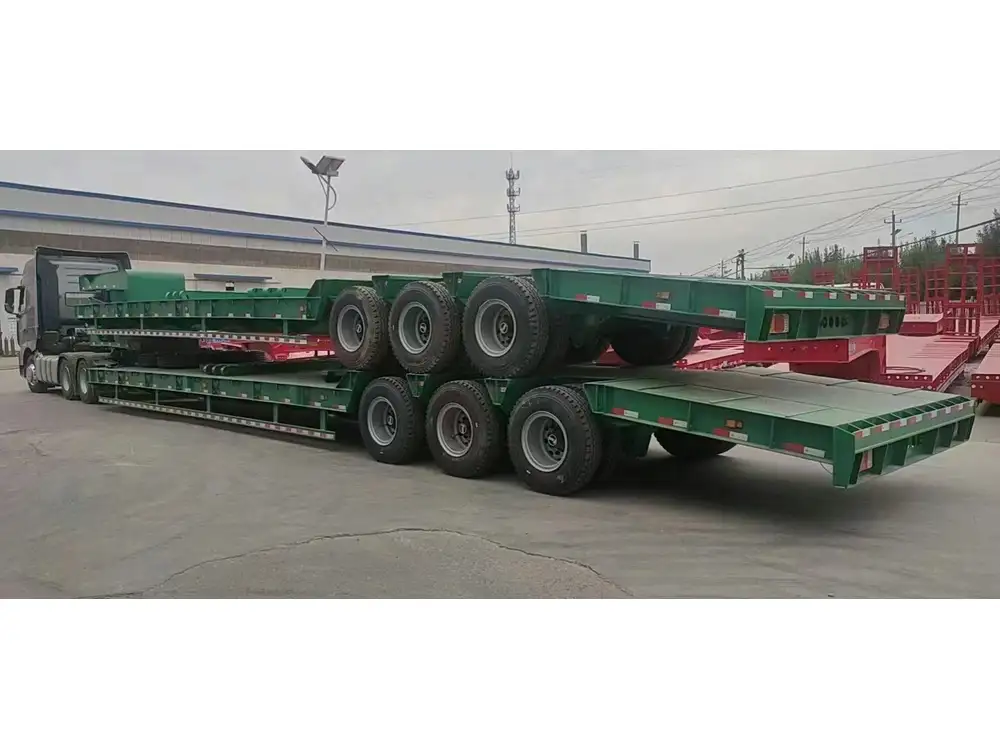In the bustling world of freight logistics, where efficiency meets necessity, intermodal transportation has risen as a paradigm of versatility. Within this system lies a crucial component – the intermodal chassis. This article provides a comprehensive exploration of intermodal chassis, container trailers, and their significance in modern shipping and freight management.
What is an Intermodal Chassis?
An intermodal chassis is a specialized wheeled frame designed to transport shipping containers over highways and railroads. These sturdy frames provide the essential support necessary for loading, unloading, and transferring containers between various modes of transportation, notably between ships, trucks, and trains. Understanding how these components interrelate is vital for any logistics or freight company seeking to enhance efficiency and reduce costs.
Components of an Intermodal Chassis
To appreciate the engineering prowess behind intermodal chassis, we must consider its principal components:
| Component | Function |
|---|---|
| Main Frame | Provides rigidity and support for the container. |
| King Pin | Connects the chassis to the truck or tractor, allowing for movement. |
| Axles | Supports the weight and allows for wheeled mobility. |
| Wheels | Facilitates rolling movement on roads and parking areas. |
| Container Locks | Secures the shipping container to the chassis during transport. |
Each of these components plays a critical role, ensuring safe and stable transport of containers over diverse terrains.

The Dynamics of Chassis Trailers
Chassis trailers are an integral part of the intermodal transport system. They are specifically designed to accommodate the varying dimensions of shipping containers, which come in different sizes—most commonly 20-foot and 40-foot formats.
Key Features of Chassis Trailers
- Standardization: Chassis trailers adhere to global standards, ensuring compatibility across different transport vehicles and containers.
- Strength: Constructed from high-strength steel, these trailers can withstand heavy weights, ensuring the integrity of the load and road safety.
- Weight Distribution: Effective design ensures even weight distribution across the chassis, minimizing potential structural stress.
- Flexibility: Many models feature adjustable settings to transport different container sizes, maximizing utility in logistics operations.
Comparison: Chassis Trailers vs. Standard Trailers
| Feature | Chassis Trailer | Standard Trailer |
|---|---|---|
| Purpose | Specifically for container transport | General freight transport |
| Structure | Modular, accommodating various sizes | Fixed body dimensions |
| Security | Container locking mechanisms | Typically requires additional securing |
| Weight Capacity | Optimized for heavy container loads | Varies based on trailer type |
This comparison highlights the unique advantages chassis trailers offer, playing a crucial role in the logistics chain.

The Importance of Intermodal Chassis in Logistics
The intermodal chassis serves as a vital link in the supply chain, enhancing operational efficiency and reducing transit delays. Let’s review some of the ways these chassis impact logistics.
1. Increased Flexibility in Transportation
Intermodal chassis allow for seamless transitions among shipping modalities. For instance, goods can be moved from a ship to a train, and then easily transferred to a truck—all without unpackaging the container. This flexibility ensures that the supply chain remains unimpeded by transport transitions, significantly reducing turnaround times.
2. Cost Efficiency
The operational costs associated with trucking and rail services can be considerable. However, the intermodal approach, facilitated by the use of specialized chassis, enables businesses to capitalize on the cost-effectiveness of rail transport for long hauls, while maintaining the last-mile efficiency provided by trucks. This combination fosters a more productive logistical apparatus.

3. Enhanced Safety and Security
When handling valuable goods, safety is paramount. Intermodal chassis are designed with robust locking systems that secure containers firmly during transit, mitigating the risks of theft and damage. Additionally, improved load distribution mechanics reduce the chances of accidents due to trailer instability.
4. Environmental Sustainability
Increased emphasis on eco-friendly practices in logistics has made intermodal transport particularly appealing. Rail transport—which chassis facilitate—is known for its lower fuel consumption per ton-mile compared to trucking. As businesses adopt greener practices, intermodal systems using these chassis are becoming a favored option.
Choosing the Right Chassis for Your Operations
Considering the multitude of available chassis options, selecting the appropriate one for your operations can prove daunting. Here are some factors to consider:

Types of Intermodal Chassis
| Chassis Type | Best Suited For |
|---|---|
| Standard Chassis | Most common container dimensions |
| Tri-Axle Chassis | Heavier loads and enhanced stability |
| Fixed Length Chassis | Bulk transport of specific container sizes |
| Extendable Chassis | Multiple container lengths |
Key Considerations
- Container Size: Ensure that the chassis can accommodate the dimensions of your containers.
- Load Capacity: Assess the weight of the typical cargo you will transport to select a robust chassis.
- Durability Requirements: Consider the environments and conditions to which the chassis will be exposed, selecting high-grade materials when necessary.
- Transport Routes: Analyze your logistics network to determine the most efficient chassis options based on road and rail paths.
Maintaining Your Intermodal Chassis
To ensure longevity and efficiency, regular maintenance of intermodal chassis is indispensable. Implementing a scheduled maintenance program can prevent costly repairs down the line. Here’s a recommended maintenance checklist:
- Visual Inspections: Regularly check for visible signs of wear, rust, or damage.
- Lubrication: Apply lubricants on moving parts, such as axles and kingpins, to prevent wear and tear.
- Brake System: Conduct tests to ensure brakes are functioning correctly, maintaining safe operation.
- Tire Health: Inspect and maintain tires for pressure and tread wear, crucial for road safety.

Addressing Common Issues with Intermodal Chassis
Despite their robust design and engineering, intermodal chassis can encounter specific challenges:
- Container Misalignment: Poor alignment can lead to instability during transport. Ensure proper loading practices are followed.
- Deterioration of Structural Integrity: High-stress routes can lead to structural issues. Address signs of wear promptly.
- Rust and Corrosion: Exposure to the elements can deteriorate chassis materials. Regular inspections and protective coatings can mitigate these risks.
The Future of Intermodal Chassis in Supply Chain Management
As we advance into a new era of logistics and supply chain management, intermodal chassis will continue evolving. Innovations in material science, manufacturing techniques, and vehicle tracking technology promise to enhance the operational capabilities of logistics companies using these essential tools.
Innovations on the Horizon
- Smart Chassis: Integrating IoT sensors into chassis design offers real-time data analysis regarding load weight, temperature, and location.
- Sustainable Materials: The move towards environmentally friendly materials and production processes is gaining momentum, for both chassis and containers.
- Automated Systems: Increased automation in loading and unloading practices is poised to streamline logistics further.

Conclusion
The intermodal chassis represents a critical component in modern transportation networks. Its distinct versatility, durability, and efficiency have made it an indispensable asset in logistics operations. By selecting the right chassis, maintaining it diligently, and keeping abreast of innovative trends, logistics companies can optimize their supply chain processes, ultimately enhancing customer satisfaction and driving business growth.
With this comprehensive understanding of intermodal chassis and container trailers, we empower businesses to make informed decisions, strategically enhance their operations, and remain competitive in the rapidly evolving market landscape.



